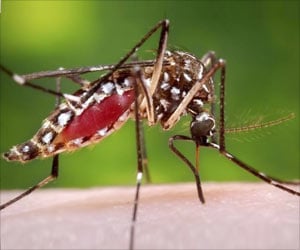The same species of monkeys located in separate geographic regions use their alarm calls differently to warn each other of approaching predators, according to researchers at New York University. Scientists found that Campbell's monkeys have a distinction between roots and suffixes, and that their combination allowed the monkeys to describe both the nature of a threat and its degree of danger.
The research team comprising of linguists and primatologists analyzed alarm calls of Campbell's monkeys on two sites, the Tai forest in Ivory Coast and Tiwai Island in Sierra Leone. Monkey predators at the two sites differ- they are threatened by eagles on Tiwai Island and by eagles and leopards in the Tai Forest. Researchers used transcriptions of these monkey calls gathered in field experiments involving playbacks of predator calls (e.g. eagle shrieks and leopard growls) and found greater complexity in expression than previously understood as well as differences in alarm calls between the two locations. These calls make a distinction between roots (especially ‘hok’ and ‘krak’) and suffixes (-oo), and their combination allows the monkeys to describe both the nature of a threat and its degree of danger. For example, ‘hok’ warns of serious aerial threats, usually eagles, whereas ‘hok-oo’ can be used for a variety of general aerial disturbances; in effect the suffix -oo serves as a kind of attenuator. While, ‘krak’ usually functions as a leopard alarm call in Tai, but as a general alarm call to warn of all sorts of disturbances, including eagles on Tiwai.
Lead author Philippe Schlenker said, “The research should help initiate the development of a form of ‘primate linguistics’, the application of sophisticated methods from contemporary formal linguistics to systems of animal communication.”
The study is published in the journal ‘Linguistics and Philosophy’.
Source-Medindia











